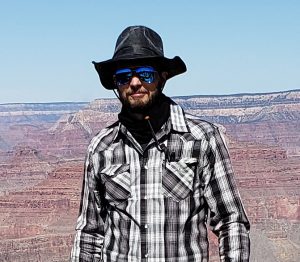Geophysical investigation of faulting in Crown Cove, San Diego Bay, California, USA

Scott Smith
MS Candidate
Advisor: Dr. Jillian Maloney
Monday, July 31, 2023
11:45 am in CSL 422
watch Scott’s talk
Abstract
San Diego Bay is a large coastal basin located in southern California that was formed by subsidence caused by a releasing step in the Rose Canyon fault zone, the major fault zone in the region. A fault-bound, pop-up structure was recently identified offshore within the southern portion of San Diego Bay. The orientation of the pop-up structure faults suggests local uplift- via transpression. However, the extent of the faults (herein, the Crown Cove fault zone) onshore has been difficult to identify with previous field surveys. The proximity of the Crown Cove fault zone to the adjacent Loew’s Resort, military housing developments, and California State Route 75 could have geohazard implications for these structures. Electrical Resistivity Tomography (ERT) and Ground Penetrating Radar (GPR) were used to characterize the shallow architecture of the projected onshore extension of the Crown Cove fault zone. The results reveal three possible subvertical faults which appear to bound electrically resistive facies. These resistive facies are interpreted to be older paralic deposits which predate inundation of San Diego Bay, suggesting local uplift. Recent kinematic models of the San Diego embayment suggest a double pull-apart basin model where the geometry of faulting in the western part is controlled by the step to the Descanso fault offshore, while the eastern embayment fault geometry is more controlled by an onshore step to the San Miguel Vallecitos fault in Baja California, Mexico . The Crown Cove fault zone occurs within a transition zone between these two steps. The orientation of the Crown Cover fault zone suggests influence from the Descanso step offshore rather than the SMVF step onshore to Baja California.

